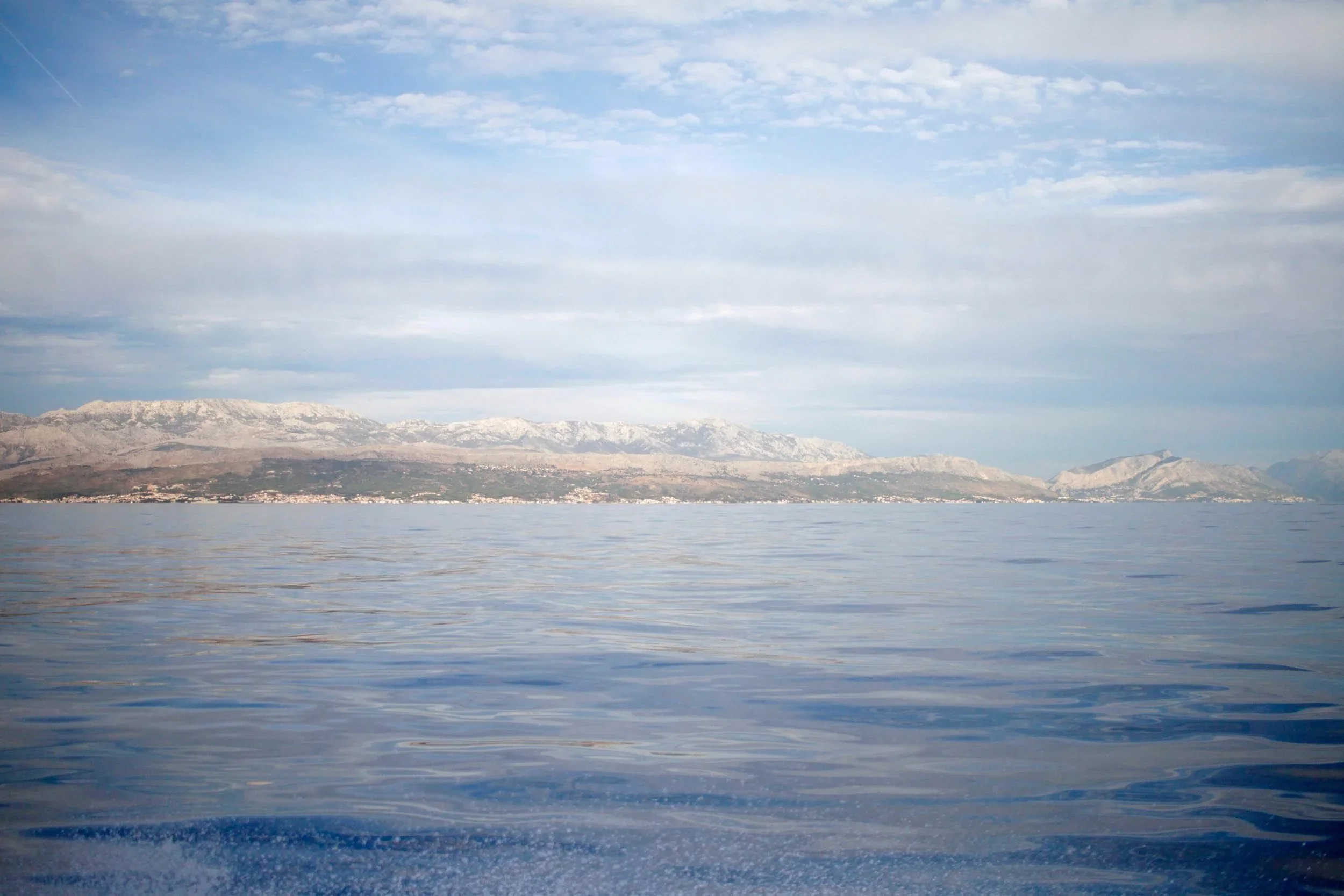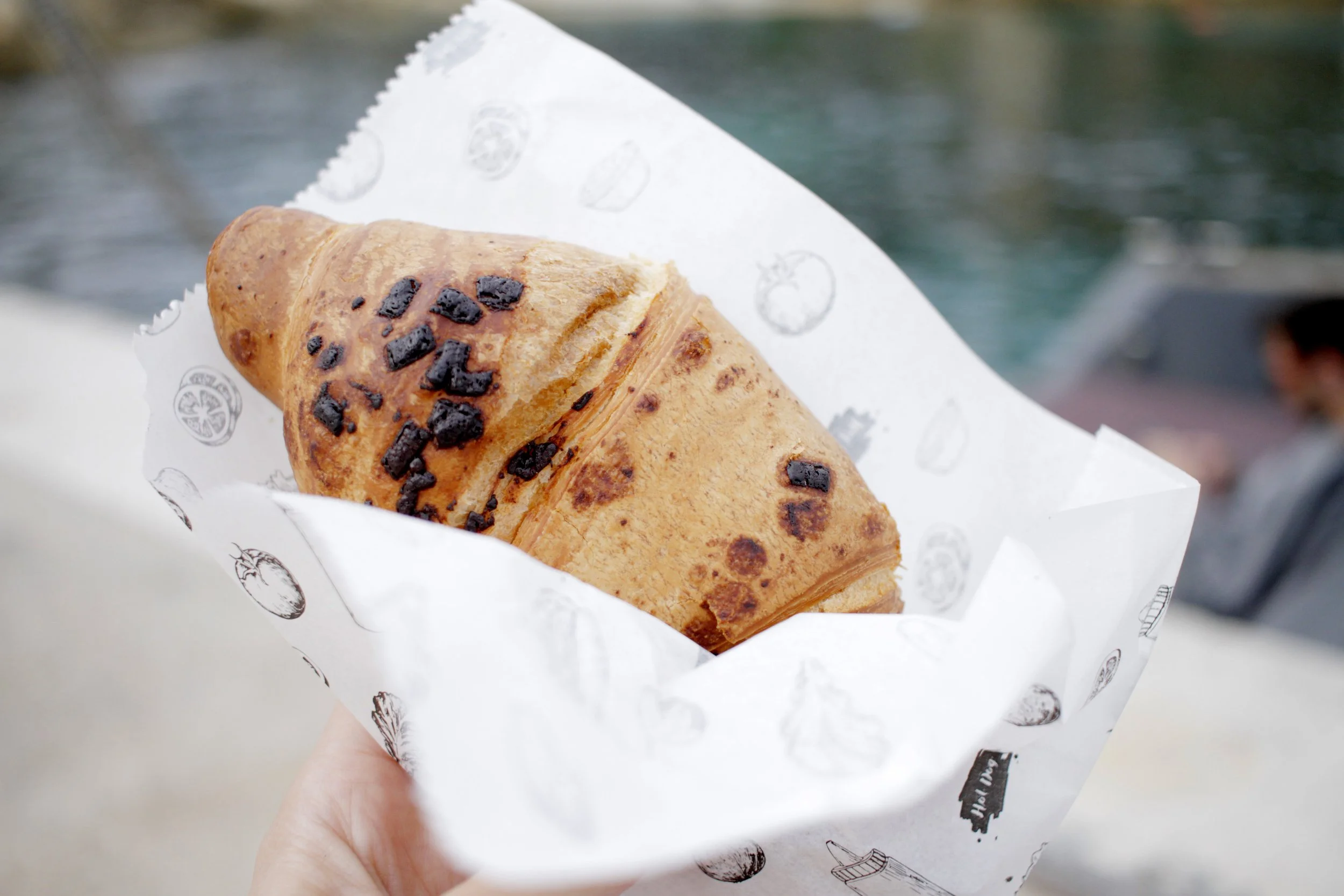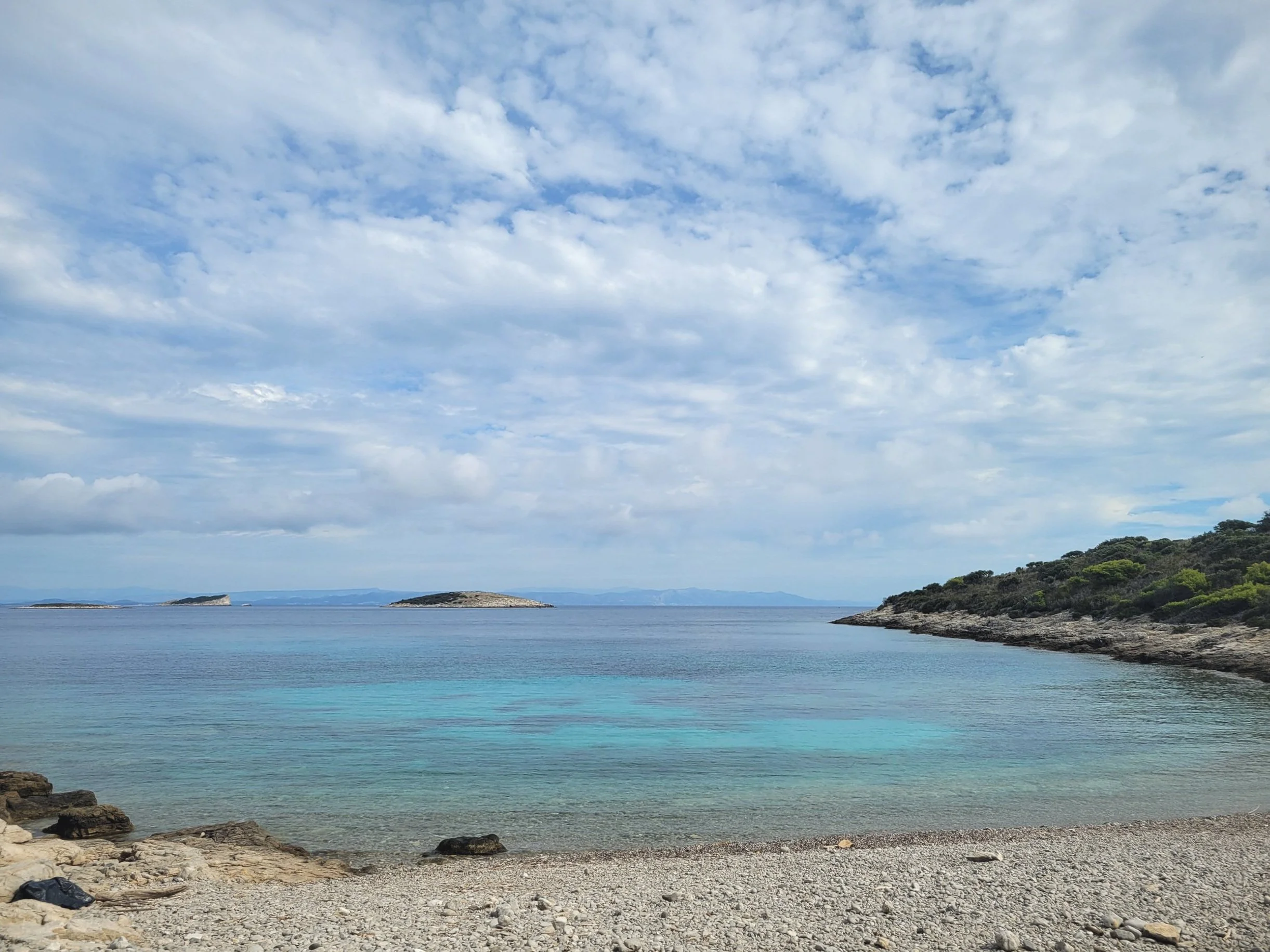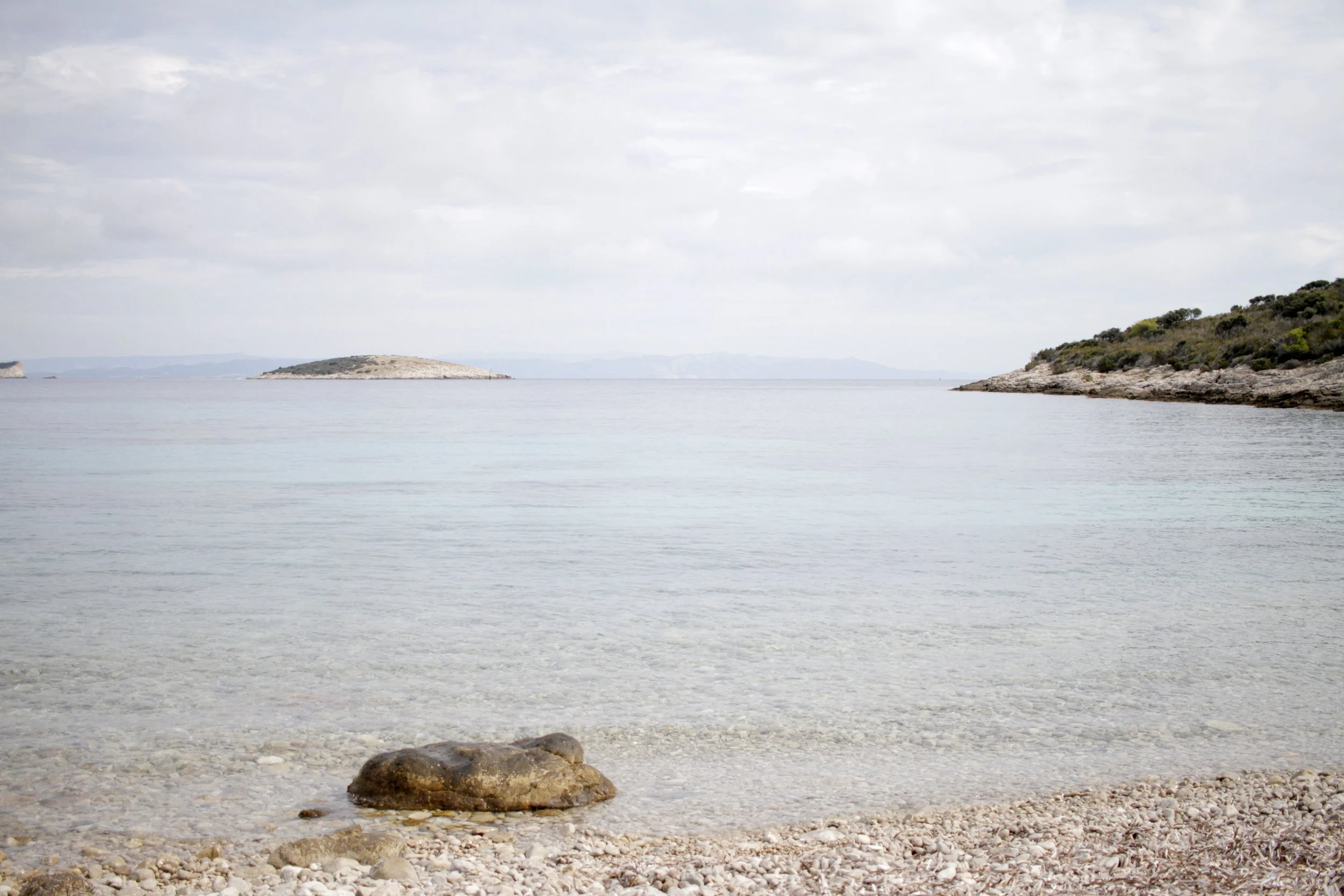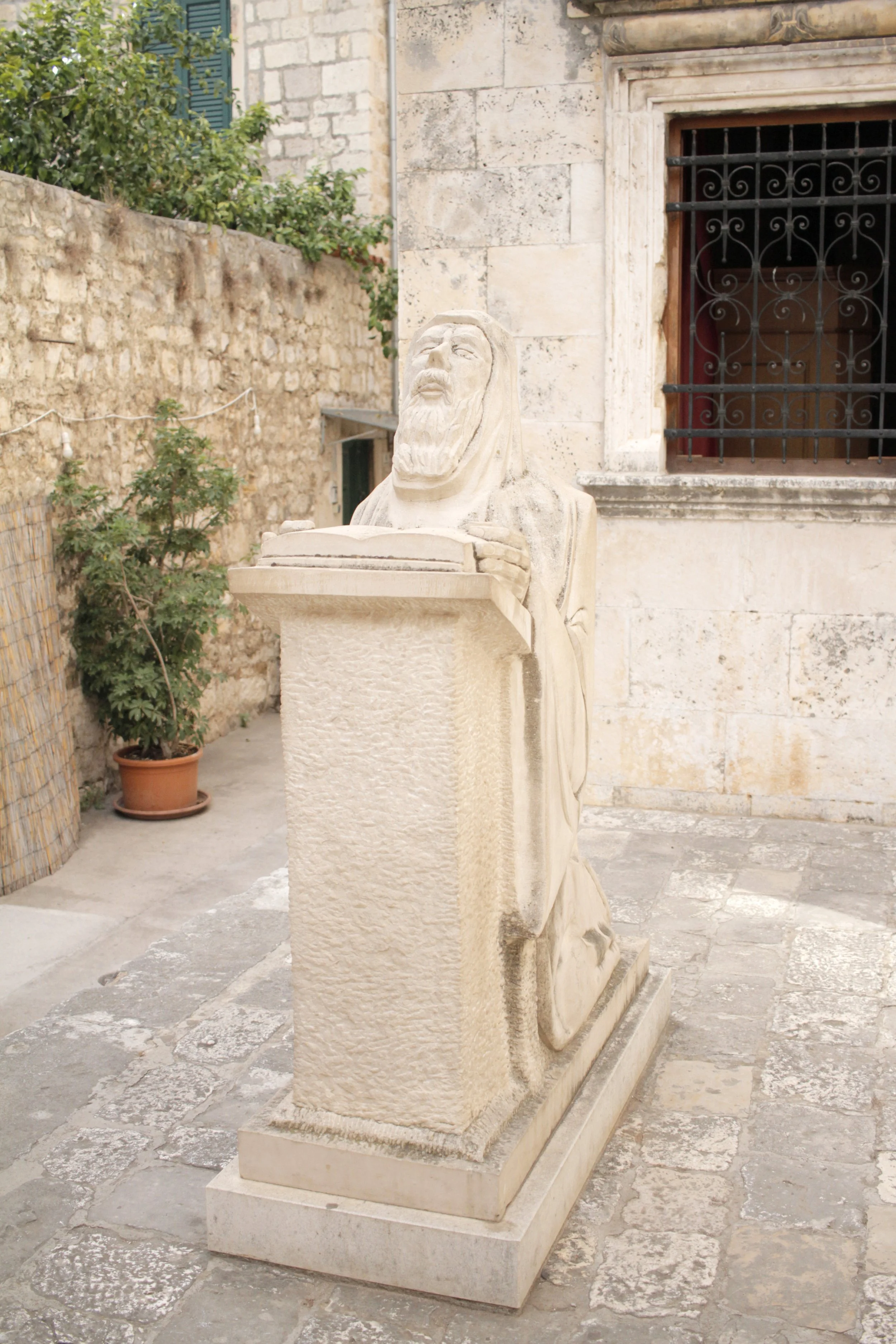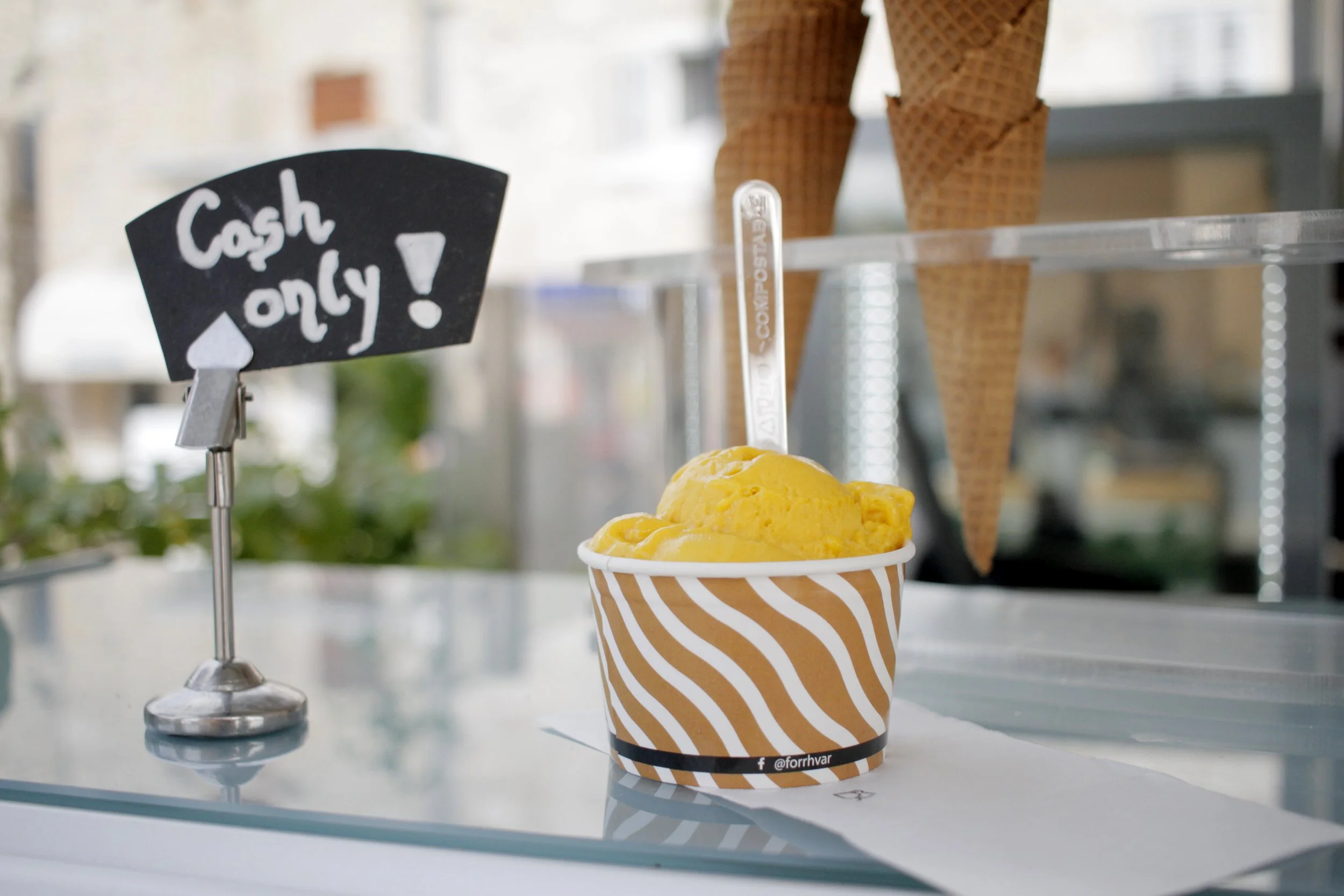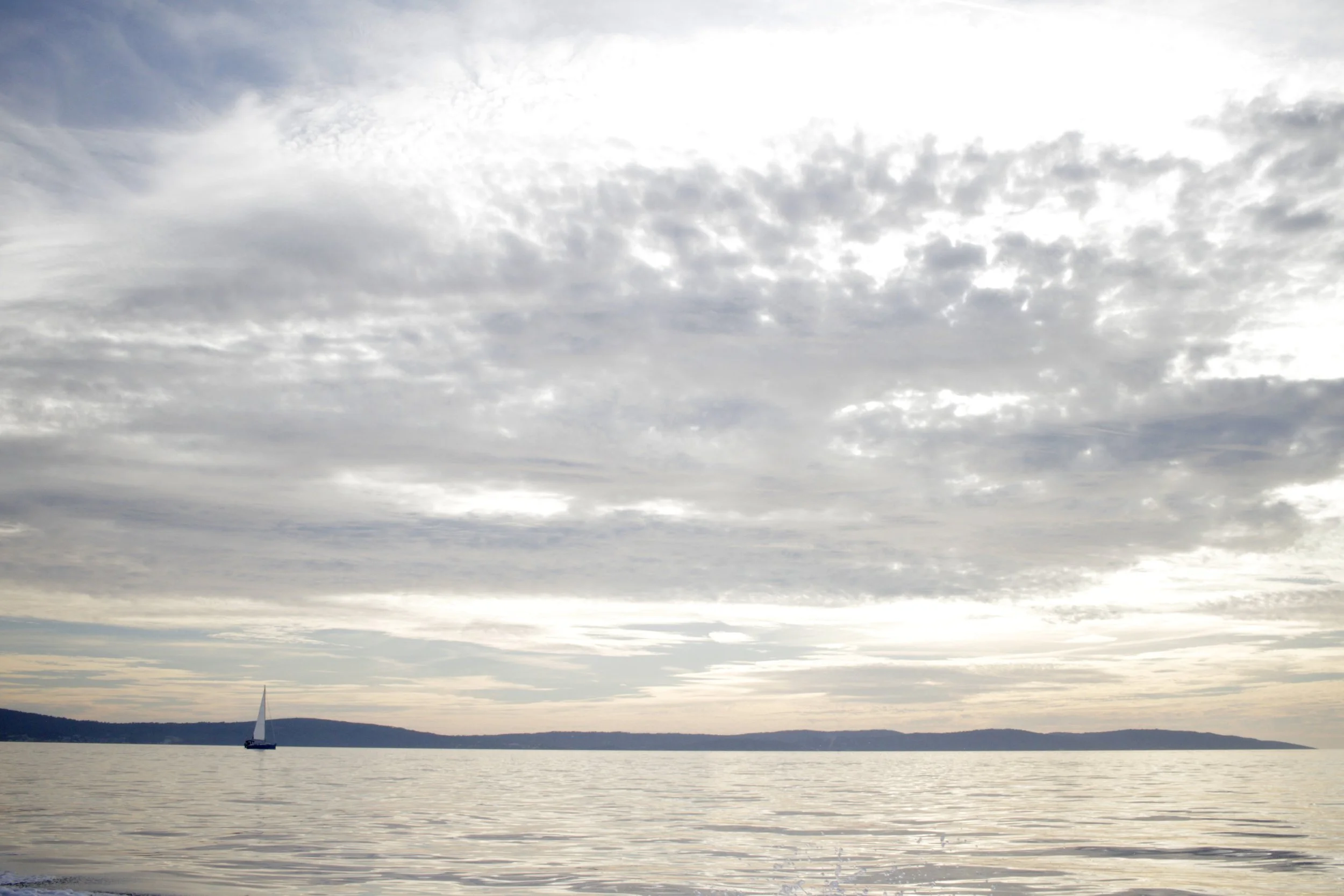Croatian Islands
Best things to do on Croatia’s Islands: spend the day island hopping with this travel guide.
Officially the Republic of Croatia, Croatia is a country located on the coast of the Adriatic Sea in Central and Southeast Europe.
Its rocky coastline might be most well-known but there’s so much more to discover, including crystal clear beaches, charming ancient towns, delicious Mediterranean cuisine and countless islands worth exploring.
Nearly 10% of Croatia is covered by untouched nature, with 11 nature parks, eight national parks and two nature reserves. And because the country focusing on agriculture, forestry and fishing, Croatia boasts high quality seafood, wine, olive oil and lavender.
The country also has a diverse cultural heritage as seen in its art, literature and music, and even offers real life Game of Throne vibes.
The Croatian archipelago lies along the eastern coast of the Adriatic Sea and has over 1,200 natural formations. Of those, 78 are islands, 524 are islets and 642 cliffs and reefs. The islands are broken up into three main groups: the northern Adriatic islands, the central Dalmatian islands and the southern Dalmatian islands.
Some of the most noteworthy islands are Krk, Hvar, Dugi Otok, Brač, Vis, Rab, Korčula, Šipan, Mljet, Obonjan, Kornati islands, Lošinj, Sveti Klement, Pag and Veliki Brijun. And if that’s not enough, there are secret coves, caves and hidden beaches to explore.
My adventure began in Dubrovnik, “Pearl of the Adriatic,” with just over two weeks to experience both Croatia and Montenegro,
From there, I organized a day trip into Mostar, Bosnia and Herzegovina, little gem of the Balkans.
Then traveled up the coast by ferry to Split, a Dalmatian seaside city brimming with Roman ruins and natural splendor. While in Split, I joined a speedboat tour to explore Blue Cave and several other nearby islands.
My last stop in Croatia took me to the central of the country for Plitviče Lakes National Park.
On my way out of Croatia, I passed through its capital, Zagreb, and flew on to Podgorica, Montenegro’s capital. By bus, I made my way to Adriatic’s coastal medieval town of Kotor and joined day trips to both Northern Montenegro for its Durmitor National Park, Tara Canyon and Ostrog Monastery and Greater Montenegro to experience Lovćen’s Mausoleum, Royal Old Capital and Skadar Lake.
Best Things to Do on the Islands of Croatia
Float / Through Blue Cave
Discover / Stiniva Cove
Skip / Rocks at Blue Lagoon
Wine & Dine / On Hvar Island
Spot / Dolphins during sunset
Best Things to Do on the Islands of Croatia
Float Through Blue Cave
After a harrowing experience with food poisoning in Split, I was able to convince my tour to bump my reservation for the following day; I‘d previously purchased tickets for a full day island hopping tour at a local agency in Split for about €55. Around 7:45 in the morning, I made my way toward the Riva, a gorgeous palm lined promenade that runs alongside the sea. There, I waited for the rest of my group to arrive, about 10 of us in total. We’d be exploring five different islands and stopping at even more destinations throughout the day.
The days destinations would include Blue Cave, Stiniva Cove, Budikovac and Hvar. Blue Cave on the island of Biševo is a grotto that glows blue at certain times of day. The picturesque Stiniva Cove on Vis Island has a narrow beach set between two giant cliffs. Budikovac Island has its beautiful Blue Lagoon and Hvar Island is a lively town with historical buildings perched around its charming port.
Pulling away from Split early in the morning was peaceful and offered a lovely perspective of the town. Saint Domnius Bell Tower rose high above the surrounding buildings and everything else shown in white and terracotta, including Diocletian's Palace through the lined palms.
The boat ride was fun; it was cool and windy and most of the group relaxed or drifted off to the hum of the motor and bumps as we sped over the water. Our first stop, the Blue Cave, lies an hour and a half south of Split. Also called the Blue Grotto, it’s a water filled sea cave located in Balan Bay on the east side of the island of Biševo. Situated in the central Dalmatian archipelago about three miles southwest of the island of Vis, the grotto is one of the best know natural beauties on the Adriatic and a popular destination because of the glowing blue light that shines during sunny hours of the day.
Once we reached Balan Bay, the bright blue waters of the sea turned a deep emerald green. We docked and waited as our guide purchased tickets for each of us to transfer on to a smaller boat with a captain who’d steer us through the cave. They also had a small shop where I picked up a coffee and chocolate croissant.
As several groups waited with tickets in hand, our group was finally up. After loading all 10 of us into a small motor boat, we were off. I chose a seat in the back of the boat, hoping to get the best vantage point.
Moving around the eastern side of the island, we passed through large rock formations and came upon the first small entrance to the cave. Too small to enter at this time due to sea level, we kept moving toward the main entrance.
Our boat maneuvered carefully and slowly into the cave, as it was a tight squeeze in some areas. Filtered light spread across its walls but only for a moment, until we were in complete darkness. The walls were jagged and covered in green moss, making it important to watch your head so you don’t bump into the limestone rock.
As we entered the cave, it was full of other boats to my surprise. They lined up in front of us, one by one, but eventually cleared, leaving more than enough room for us to enter. Slowly, we moved deeper into the cave, as our guide pushed us along without the motor to propel us forward.
Depending on the season, the best time to visit the cave is early afternoon, between 11 a.m. and noon, which just about when we arrived. At this time, the sunlight reflects through the water coming from the white floor of the cave and bathes the grotto in azure light, making objects in the water appear silver in color.
And wow was it incredible, incredibly blue. Everything lit up from below like a glowing light coming from all directions. Even people’s faces lit up in shades of blue.
The cave had been formed by waves, as sea water eroded the limestone rock of Biševo Island. The cave itself is almost 80 feet deep and 50 feet high in some areas, while the entrance measures only five feet high and six and a half feet wide.
Originally, the cave was only accessible by diving as it had one natural entrance below sea level. It was first described and painted by Baron Eugen von Ransonet, and based on his suggestion, an artificial entrance large enough for small boats was created in 1884.
The natural entrance on the southern side of the cave is said to resemble a vault ceiling of a grotto and it’s through this opening that sunlight enters and creates an iridescent blue glow inside the cave. Additionally, a stone arch connects the two walls of the cave, visible just below the waters surface.
Quietly floating over the glassy water, the cave was silent and other worldly. The blue light danced across the limestone walls and the surface of the water. As we floated over the stone arch, I noticed a tiny lone fish swimming nearby.
All in all, the cave receives more than 10,000 visitors every year. Tourist boats often include a visit to another similar cave on the island called Zelena špilja, or the Green Grotto, which is larger in size and displays an emerald-green tone due to similar circumstances.
Before we knew, we had finished our loop inside the cave and reached the entrance once again. Drenched in light, we emerged from the shadows. After waiting in line for the toilet rooms on the island and transferring back to our larger boat, we were off to our next stop, Stiniva Cove.
Discover Stiniva Cove
Stiniva Cove was a short boat ride away and is located on the island of Vis, the farthest inhabited island in Croatia. The cove is known for its unique natural beauty dominated by high cliffs that form a tiny sea entrance leading to a pebbled beach and clear turquoise waters. The secret beach sits on the southern edge of the island and is fairly tough to locate from the sea, especially if other boats aren’t anchored at its entrance.
The secret beach can be reached through its sea entrance by boat or hiking down a steep pebbled path from above. If staying on the island of Vis, head to Pliško polje and follow the signs to Žužeca hamlet. The hike down is quite narrow and lasts about 20 minutes.
Otherwise, park your boat and jump in. As we arrived, the boat anchored and I was surprised to learn that we’d either have to swim the distance to the beach or hop on a small dingy and pull ourselves across with a rope. Up for the adventure and not the chilly waters, I jumped into the dingy with a few other girls and began inching our way toward the rocky shore.
As we reached the gap between the rocky cliffs, the beach slowly emerged. There was a rocky white shore scattered with small boats and cabanas, along with a small tavern called Peruka. It was very quiet so early in the day, or perhaps it was due to the overcast.
Once on the island, the views back toward the sea were gorgeous. The morning was quiet and calm and so was the beach. The pebbles were large round white stones and covered the shore, making it difficult to walk. With about 30 minutes to enjoy the silence, we didn’t have much time to explore anything more than the beachfront. Back in the dingy, we pulled ourselves toward our escape.
Skip Rocks on Blue Lagoon Island
Just 10 minutes away by speedboat is the small island of Budikovac. Located off the southeastern coast of Vis, Veliki Budikovac Island is home to Blue Lagoon, formed by Budikovac Island and two sister islands called small Budikovac and Sanak.
The island has only one resident who operates a local restaurant, animal farm and vegetable garden but is otherwise uninhabited. Visitors can explore Budikovac during the day only, when boats are running, as there is no place to stay overnight on the island.
Standing above the bay, the waters were more of a turquoise, though, up close they were crystal clear making it perfect for swimming or snorkeling. They were so clear, it was possible to see teams of fish swimming in the shallow waters.
A few of us wandered up and over to the other side of the island, opposite from where we docked, and enjoyed a few peaceful moments. We also tried our hand at skipping rocks in the calm waters and were mostly successful.
The views of the bay were absolutely stunning; the beach was covered with small white stones and the rocky coastline with low shrubs in shades of deep green.
The island is ideal for hiking, sunbathing, relaxing and those looking for a quiet respite from the hustle of Split.
The most popular time to visit is summer but late spring and early autumn are still warm enough to swim and tend to be quieter than high season. The waters do get fairly chilly, though, in October during my visited.
After about an hour of exploring and taking in the rich scenery, it was time for our group to move on to the next destination, Hvar Island.
We’d already had so much fun island hopping and our captain had turned out to be an excellent DJ, pumping us up with fun dance music along the way. The sun was bright and a few of us stretched out on the back of the boat, indulging on the rays and mist of the sea water.
Wine & Dine on Hvar Island
Known for sunny days, delicious food and wine and a wild nightlife scene, Hvar Island was our next destination. Hvar sits northeast of Budikovac Island about 45 minutes from Blue Lagoon and was more or less, our last stop other than a quick swimming location that ended up being more of a rest in a nearby bay.
Located off the Dalmatian coast between the islands of Brač, Vis and Korčula, Havar was one of my favorite stops of the day. It’s the fourth most populated of the Croatian islands and is unusual for having a large fertile coastal plain and fresh water springs. Its hillsides are covered with pine forests, vineyards, olive groves, fruit orchards and lavender fields and the climate is known for mild winters and warm summers with many hours of sunshine.
Highlights of this port town include its main square anchored by the Renaissance-era Hvar Cathedral, 13th century walls and hilltop fortress. The island is also home to beautiful beaches like Dubovica and excursions that reach nearby Pakleni Islands, home to secluded beaches and coves.
With only a few hours to explore the island and a rumbling belly, I headed straight for a bite to eat. A five minute walk from the docks was an adorable restaurant called Mediterraneo Dine and Wine, on an outdoor patio tucked between buildings. As I sat down, I was served a tiny shot of delicious honey wine.
Keen to try something unique and local, I chose the handmade macaroni pasta with black truffle white sauce and freshly shaved truffles, prosciutto and parmesan chips. I’d been hoping to reach northern Croatia and book a truffle hunting experience but wasn’t able to find the time; this was the next best thing. My server even explained a bit about how the hunts go.
Istria is Croatia's truffle capital, home to some of the world's finest truffles. The valuable mushroom grows best in the Mirna River Valley and can only be found with the help of trained dogs or domestic pigs during a “truffle hunt.” And this was exactly where my truffles originated.
For an appetizer, a charcuterie spread coined Tastes of Dalmatia, including local specialty meats and cheese. Dalmatian prosciutto, sheep cheese, wild boar and black truffle sausage, olives, dried plums and walnuts, spread neatly across the plate.
When the pasta arrived, I was blown away. A mountain of gooey hand rolled noodles covered in a white sauce and topped with shaved truffles and parmesan. The meal was absolutely incredible and one of my favorites during my time in Croatia.
Satiated, it was time to wander the streets of Hvar, taking in the sites, boutiques and cafes. The alleyways were narrow stone paths smoothed over by hundreds of years of use. They wove between tall stone buildings filled with homes and shops displaying souvenirs like tee shirts and cloth bags. The neutral palette popped as green plant life seemed to sprout directly out of the stone.
Historically, Hvar has been consistently inhabited since early Neolithic times, with an ancient wall surrounding the old city. In 385 BC, Greek colonists founded Dimos (presently Hvar) and Pharos (Stari Grad, a town on the north side of Hvar) and in 219 BC, the island became Roman.
During the 7th century AD, Slavs fleeing the mainland settled on the island. Through the European Middle Ages and into modern times, Hvar has survived continuing changes of occupancy, acting as a frontier for Slav culture in the midst of persistent struggle for dominance in the Adriatic. After World War I, Hvar became part of Yugoslavia. Today, what you see throughout Hvar dates from the 12th to the 17th century and is of both religious and military in nature.
After some wandering, it was just about time to meet up my group, so I started toward the water. While waiting, I grabbed a cup of mango sorbet, sat on a bench and continued people watching.
The port was very active, with people arriving, passing by and departing. Hvar was incredibly charming and a beautiful island, one that I wished I could have stayed longer and explored the sites more.
Our group gathered back on the speedboat and moved to a nearby bay for one last chance at dipping into the cool waters. Perhaps just as tired and full as I was, only one from the group took the opportunity to swim. With that, we took of toward Split, about an hour away.
Spot Dolphins During Sunset
With the sun setting over the Adriatic and a cloud filled sky, we rested on the back of the boat, enjoying the ride to Split. Every few minutes the sky seemed to change, as the sun continued to move across the sky.
The Adriatic Sea separates the Italian Peninsula from the Balkan Peninsula and is the northernmost arm of the Mediterranean Sea. Its coasts reach the countries of Albania, Bosnia and Herzegovina, Croatia, Italy, Montenegro and Slovenia.
Mainly located along the Croatian part of the Adriatic’s eastern coast, the waters contain more than 1,300 islands. The sea is divided into three basins, the northern being the shallowest and the southern the deepest, reaching depths of 4,045 feet. Surface waters typically range from 86 °F during summer and 54 °F in winter, calming the Adriatic Basin’s climate.
The Adriatic’s shores are populated by more than 3.5 million people with the largest cities being Split, Trieste, Venice and Bari. The earliest settlements on its shores were Etruscan, Illyrain and Greek and by the 2nd century BC, the region was under the control of Rome. During the Middle Ages, the Adriatic shores and the sea were controlled by several states including the Byzantine Empire, Croatian Kingdom, Republic of Venice, the Habsburg monarchy and the Ottoman Empire. The First French Empire gained coastal control during the Napoleonic Wars, while the countering British effort ultimately secured the eastern Adriatic shore.
After the Italian unification, the Kingdom of Italy expanded eastward, lasting until the 20th century. Besides Trieste and its surrounding area which remained under Italian rule, the entire eastern coast passed to Yugoslavia and Albania following World War I and the collapse of Austria-Hungary and the Ottoman Empire. Once Yugoslavia broke apart during the 1990s, four new states were formed on the Adriatic coast. Over time, Italy and Yugoslavia agreed on their maritime borders, along with Italy and Albania, but those between Slovenia, Croatia, Bosnia and Herzegovina and Montenegro are still disputed.
Along the Adriatic coast, fisheries and tourism are main sources of income, though, Croatia’s tourism industry has grown faster than the rest of the basin. Maritime transport is also a major contributor of the area’s economy, with 19 seaports in the Adriatic that each handle more than a million tonnes of cargo each year. The largest seaport for cargo is the Port of Trieste in Italy, while the largest by passengers served per year is Split. During our trip, we spotted several cargo ships, along with several sailboats and even a few cruise liners.
When we slowed closer to shore, we spotted a few dolphins playing in the warm waters of the bay. The golden light of the sunset was so nice and it was a perfect ending to a wonderful day exploring.
Ultimately, we returned to shore around five in the evening, just in time for another delicious meal in Split.

